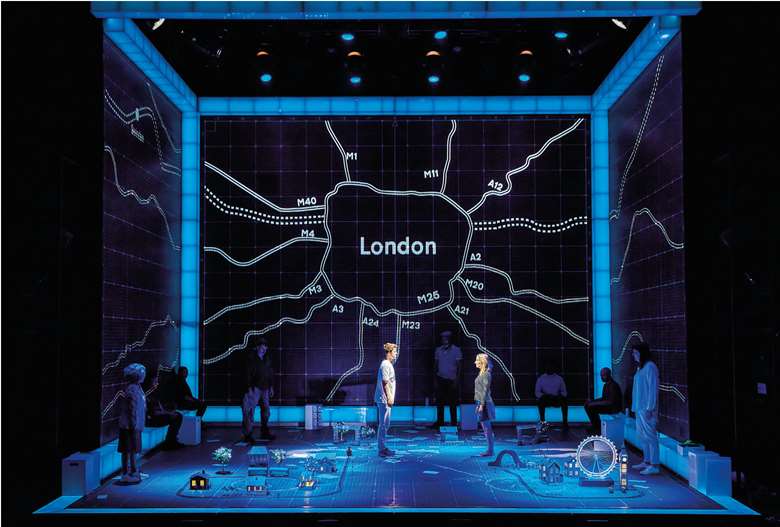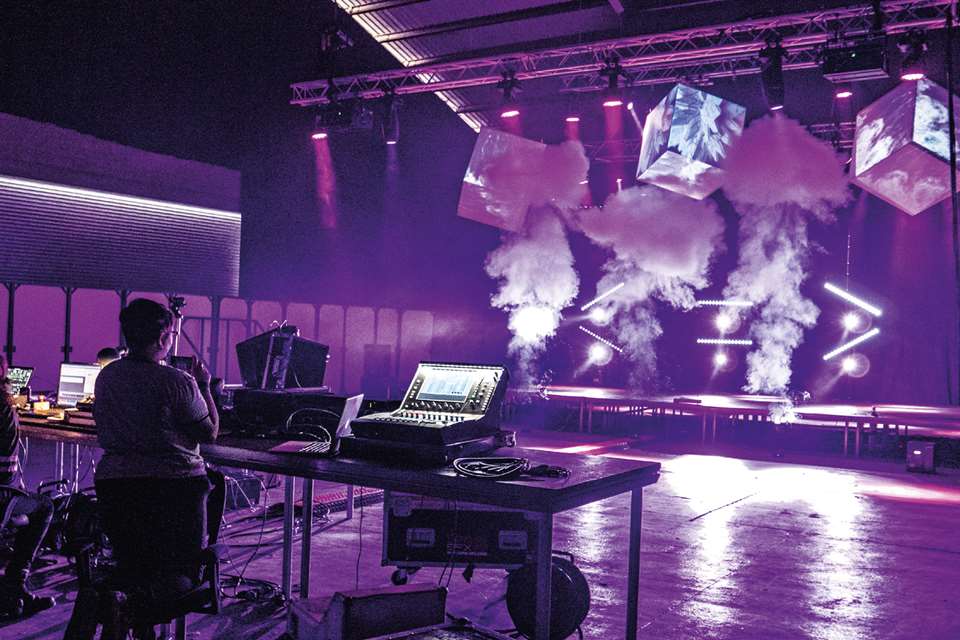Projecting into the future: projection design as a career
Nick Smurthwaite
Tuesday, February 1, 2022
Learning to adapt and overcome, the use of technology in theatre has skyrocketed since the pandemic began. Nick Smurthwaite asks two successful projection designers what they think the future holds for the industry and its relationship with tech

BRINKHOFF-MOEGENBURG
One of the unexpected side effects of the pandemic has been the opportunity for some theatres and producers to reach wider audiences through streaming their own productions on social media and internet platforms. While this clearly isn't the same as the shared experience of live theatre, it has hastened the roll-out of live streaming at a time when many theatres are struggling to survive. Better a virtual audience than no audience at all.
Streamed shows
Digital subscription services, such as Marquee TV and Digital Theatre – dubbed ‘Netflix for the Arts’ – featured shows from the Royal Shakespeare Company and Glyndebourne Opera. The BBC commissioned and distributed new work via TV, radio and iPlayer through its digital commissioning agency The Space, and Official London Theatre launched its own platform of ‘exclusive theatre content’ on Sky VIP.
It has also led to digital wizards being in greater demand than ever before, with many theatres and production companies drafting in skilled technicians to facilitate the filming and transmission of their shows. Bigger organisations like The National Theatre, the Royal Opera House and the RSC have their own in-house digital teams to take care of business.
Embracing digital theatre
The Space advises and enables arts organisations in building digital skills and capacity, helping them to reach a wider audience through producing digital content. Streaming filmed versions of existing productions can be technically challenging, requiring skill sets outside the remit of most trained theatre practitioners.
There are however digital facilitators online geared to simplify streaming and make it more accessible to smaller, cash-strapped companies. Scenesaver aims to give these companies a platform for their work, while enabling disabled audiences to see shows they might not otherwise have an opportunity to see. They also answer technical queries.
Looking ahead, there is no doubt that live theatre needs to embrace digital in all its forms. Whether this is interactive, with audience members using their mobile phones to view the action on stage in close-up, or simply to facilitate a post-performance discussion, only time will tell.
Digital artists
What we do know is that the digital art of projection design is becoming more and more sophisticated and commonplace as part of the scenic design process. Many of the West End's top shows – Back to the Future: The Musical, Harry Potter and the Cursed Child, The Shark is Broken, Les Misérables – are currently deploying the wizardry of Finn Ross or Nina Dunn, two of our finest video designers, as they are known in the theatre world.
Unsurprisingly they both stumbled into video design by accident since it has only become a recognised component of theatre design since the 1990s. Now there are designated courses at several drama schools and the work of Ross, Dunn and others gets singled out by the critics.
In Dunn's case, her projections for The Shark is Broken, inspired by the making of the 1975 film Jaws, were hailed as ‘spellbinding’ and ‘a stroke of genius’ by The Daily Telegraph. Dunn says, ‘I worked closely with the lighting designer. We needed to deliver the classic Jaws look and the sense of these guys being at sea in a compelling way. My job was to bounce the horizon line to simulate the movement of the boat.’
Finn Ross's most challenging – and satisfying – job to date was The Curious Incident of the Dog in the Night-Time for the National Theatre. Currently on tour in the UK, the show has been seen in 108 towns and cities at home and abroad since it opened in 2012. Ross says: ‘It was an incredibly special show to work on and the closest I've come to genuinely impacting on people's lives with a piece of theatre. The designer (Bunny Christie) created this world of graph paper projected onto a box-shaped set, so I had to make a graphic representation of the lead character's state of mind.’
How far can technology take us?
Despite their artistry and expertise, neither Dunn nor Ross is keen to see technology replace the traditional stage set any time soon. ‘There is a time and a place for technology,’ says Dunn. ‘You have to judge what your story needs and not use technology gratuitously.’
‘Projection should always be in the service of the live performer’, Ross adds. ‘My work is part of an image that's made up of actors, scenery, lighting, sound and costume. The flow of energy between the actors and the audience is, for me, very analogue.'
Does he welcome the day when technology could enable audiences to see actors in closeup or different perspectives on the action through their phones or tablets? ‘Not really. You need to surrender yourself to the world that's being created for you. Putting barriers between actor and audience can be gimmicky and unhelpful.’
Nina Dunn is more open to the wider application of digital, and she believes there will be a close alignment between theatre and gaming technologies in the years to come. ‘There is a lot more we can do,’ she says. ‘There may be a place for augmented reality on mobile phones, and I'm excited about volumetric capture.’
Dunn helped set up a degree course on Virtual Theatre and Digital Experiences at Rose Bruford School of Acting.
Find out more at bruford.ac.uk




